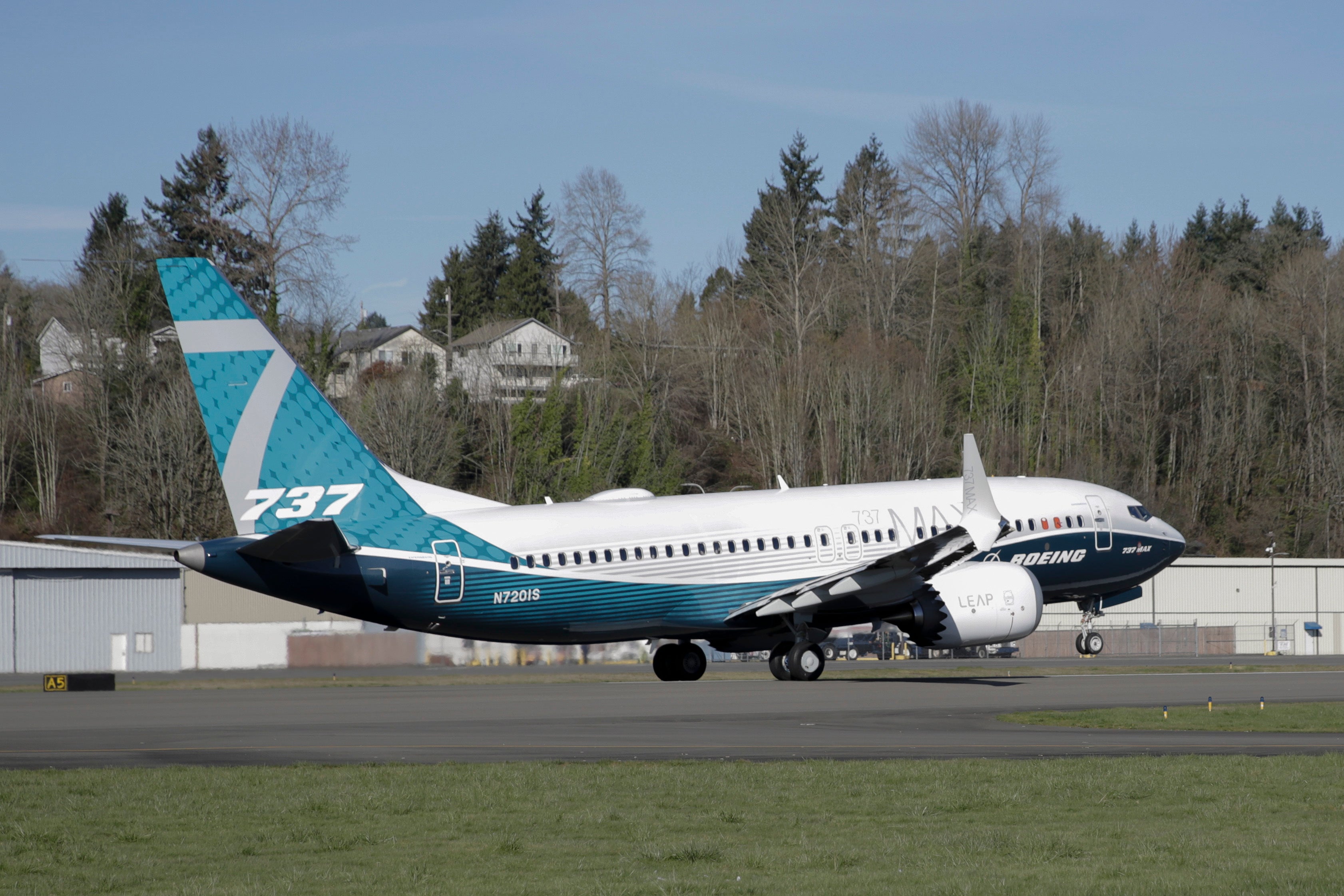Boeing still hasn't fixed this problem on Max jets, so it's asking for an exemption to safety rules
Boeing wants an exemption from federal safety standards for an anti-icing system on its new, smaller version of the 737 Max airliner

Your support helps us to tell the story
From reproductive rights to climate change to Big Tech, The Independent is on the ground when the story is developing. Whether it's investigating the financials of Elon Musk's pro-Trump PAC or producing our latest documentary, 'The A Word', which shines a light on the American women fighting for reproductive rights, we know how important it is to parse out the facts from the messaging.
At such a critical moment in US history, we need reporters on the ground. Your donation allows us to keep sending journalists to speak to both sides of the story.
The Independent is trusted by Americans across the entire political spectrum. And unlike many other quality news outlets, we choose not to lock Americans out of our reporting and analysis with paywalls. We believe quality journalism should be available to everyone, paid for by those who can afford it.
Your support makes all the difference.Boeing is asking federal regulators to exempt a new model of its 737 Max airliner from a safety standard designed to prevent part of the engine housing from overheating and breaking off during flight.
Federal officials said last year that Boeing was working to fix the hazard on current Max planes. In the meantime, they told pilots to limit use of an anti-icing system in some conditions to avoid damage that “could result in loss of control of the airplane.”
Without a fix ready, Boeing asked the Federal Aviation Administration last month for an exemption to safety standards related to engine inlets and the anti-ice system through May 2026. Boeing needs the exemption to begin delivering the new, smaller Max 7 to airlines.
Boeing said Friday that it is “developing a long-term solution” that would face FAA review.
But some critics are raising alarms about basing safety on pilots remembering when to limit use of the anti-ice system.
“You get our attention when you say people might get killed,” Dennis Tajer, a spokesman for American Airlines pilots, told The Seattle Times, which reported on the waiver request Friday. “We’re not interested in seeing exemptions and accommodations that depend on human memory ... there’s just got to be a better way.”
Pilots flying the Max 8 and Max 9 have been warned to limit use of an anti-icing system to five minutes when flying in dry conditions. Otherwise, the FAA says, inlets around the engines could get too hot, and parts of the housing could break away and strike the plane, possibly breaking windows and causing rapid decompression.
That is what happened when an engine fan blade broke on an older 737 during a Southwest Airlines flight in 2018. A piece of loose engine housing struck and shattered a window, and a woman sitting next to the window was killed.
The overheating issue only affects the Max, which has engine inlets made from carbon composite materials rather than metal.
A Boeing spokeswoman said in a statement that under the company's request, pilots of the new Max 7 would follow the same instructions for the anti-ice systems as pilots of current Max planes.
“We are developing a long-term solution that will undergo thorough testing and FAA review before being introduced to the 737 MAX fleet,” the spokeswoman said.
The FAA said last year that it had not received any reports of the overheating problem happening on Max flights, but that it issued the warning to pilots because of the severity of the risk, which was discovered on a test flight.
The 737 Max went into service in May 2017. Two of the planes crashed in 2018 and 2019, killing 346 people. All Max jets were grounded worldwide for nearly two years while the company made changes to an automated flight-control system that pushed the nose down based on faulty sensor readings.
More recently, Max deliveries have been interrupted to fix manufacturing flaws, and last month the company told airlines to inspect the planes for a possible loose bolt in the rudder-control system.